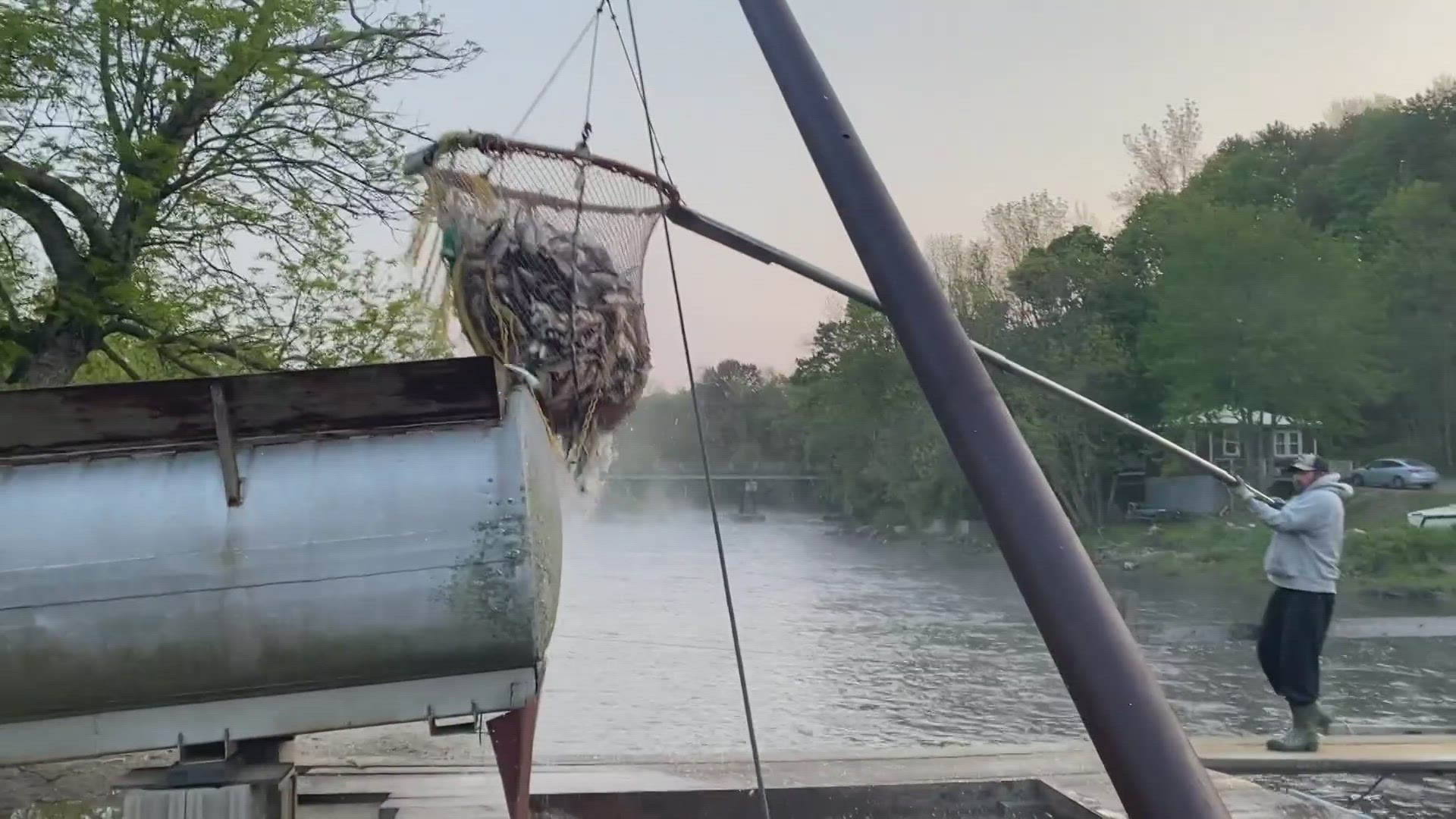WARREN, Maine — Fishermen and regulators call the return of alewife runs in Maine a success story.
In the '80s, the fishery was all but gone. Dams and overfishing drove the migratory fish, which lives in the ocean and returns to ponds to spawn, out of the playbook for lobstermen bait.
But now with regulations by the Maine Department of Marine Resources and the removal of dams throughout Maine streams, the alewife is now running better than the last few decades.
"We look forward to it every year," Dana Johnson said, who owns a trap and net system in Warren, hauling hundreds of pounds of alewife a session.
The crew starts around five in the morning, with a worker dipping a net into the trapped alewives.
Out of the thousands that migrate through the Saint George River, a fraction gets corralled into the pen.
The alewife harvested here end up going into lobster traps.
Gerry Cushman, a lobsterman out of Port Clyde, said lobsters like alewife because of their freshness.
"It's my favorite bait, so I've been coming here for over 30 years," Cushman said. "Usually alewives make for a much better catch."
The alewife run also comes as a temporary relief to lobstermen amid high bait and fuel prices.
"It's a little bit cheaper. It goes a lot further for me anyway," Cushman said.
Since the season is so short, it can't totally replace other forms of bait such as Atlantic menhaden, also called "pogies," which had their season cut short at the end of last year.
Johnson also agrees the return of alewives to the region is a boost to the ecosystem and business.
"I think the alewife run has come back to the state five times as much as it used to be," Johnson said.
The Department of Marine Resources said while the rebound of alewives is outstanding and an environmental boost, it's still around 5 percent of what it used to be nearly a hundred years ago.
Cushman said the alewife brings a lot of other wildlife with it.
"They bring life," he said. "When you see alewife, everything follows. Look at the birds and all the life around here."
And if the future looks like these last few years, the DMR also said it hopes to double the current migration population of alewives in Maine in the next 10 to 15 years.

